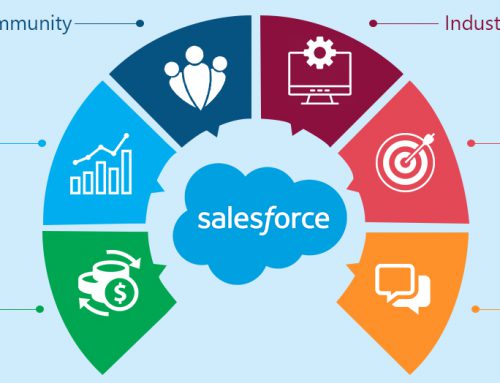Table of Contents
“The best marketing doesn’t feel like marketing.” – Tom Fishburne
Today’s customers share a common problem: they hate marketing, and it’s everywhere. With more customers using ad blockers than ever before, the message to marketers is loud and clear: we don’t want ads. About 22.7% customers in the US alone are using ad blockers in 2019.
While consumers think advertising is the problem, the problem doesn’t lie with marketing per se. The real problem is when consumers are bombarded with irrelevant messages that mean nothing to them. When a customer receives a message that isn’t relevant to their personal wants and needs, it’s that much easier to ignore that message.
Marketers need to rise to this challenge. We need to make marketing relevant. We need to work to provide a better overall customer experience by personalizing each and every step of the customer journey.
The modern customer is just a click away from directly interacting with a brand. He is not confined to a single channel or platform anymore. And this is the perfect chance for the brand to surround the customer and give him a unified brand experience – this customer could be a potential buyer or even an existing customer. This is exactly what Omnichannel Marketing addresses.
What is Omnichannel Marketing?
Omnichannel Marketing is something that all the marketers and e-commerce brands are talking about a bit lately, but in the longer run, this is a very important fundamental shift, both in how customers have come to expect in a brand experience and how marketers be of the opinion about reaching the right customers. To give a broad definition, omnichannel marketing is the approach where brands combine all possible channels, both online and offline, into a cohesive strategy.
Now the whole idea is to create a unified message for their consumers across all the channels in this ever changing landscape and evolving consumer demands. Above all of this, there arises the immediate need to implement these plans into action and also automate these multi-channel strategies in order to improve their respective customer journey. It does not matter what channel the customer opts for, all he wants is a smooth and consistent experience.
Difference Between Multichannel & Omnichannel Marketing
A customer’s needs change rapidly over the course of their customer journey, and a brand’s message to that customer needs to change in response to those needs.
Multichannel marketing places the brand at the center of the strategy.

In Multichannel automation, the brand reaches out across as many channels as it can maintain at once, attempting to reach all of their customers with the same message. But then, you have the exact same one-size-fits-all message across those channels, and that means that your message will be relevant to only a small number of consumers across those channels.
Omnichannel marketing puts the customer, and the data surrounding that customer at the center of the strategy.

In omnichannel marketing, the channels are the brand, in lieu of an extension of the brand. Each of those channels adapts around the customer’s behavior to create a completely personalized and seamless experience. As a customer moves through their purchase journey, these channels update the customer’s data and react with the most relevant message based on that behavior. This way the message is always relevant, and in being relevant, improves the ROI of each and every channel used for customer engagement.
How Does Omnichannel Marketing Automation Work?
Omnichannel marketing automation is all about delivering the right message to the right customer at the right time. While automation is a critical aspect to omnichannel, it’s only one part. In order to approach an omnichannel strategy, you have to reorganize your company and gather a bit of data. This process boils down to five main steps you’ll need to take.
-
Centralize your customer data
It is important to breakdown the walls between the teams, set up a common goal to accomplish without losing sight of their individual objectives. This starts by centralizing customer data, includes everything you know about your customer and what are their needs in one place. Putting the customer at the center of your strategy will only help you improve your business operations from beginning to end.
-
Examine Your Customer Experience Under a Microscope
This means you need to perform a company-wide audit on your customer experience. It’s easy to boil that down to user experience- or the interaction that a user has on your site. While that’s a huge piece of the puzzle for ecommerce stores, a customer experience goes even further. This starts from the discovery phase, the overall user experience, the checkout process and the post sales experience.By measuring each aspect of your customer journey, you can see exactly what the customer sees when engaging with your brand. This will help to understand the customer mindset as they move through their purchase journey.
-
Gather Critical Customer Feedback
Let’s face facts, customers are easily distracted. But, there are more opportunities than you think to get customer feedback at several points in the customer journey. A great way to guarantee a response is to offer a way to give feedback that’s low-commitment, something where a customer has to click in order to respond.This form of low-commitment feedback isn’t detailed data, but it’s very important and can help you make critical decisions on different aspects of your customer experience.
-
Segment and Target Your Messages
With the data that you’ve gathered on your customer, you can segment your customers effectively into smaller groups, majorly on the basis of:
- Profile Data and Demographics (who is the customer?)
- Campaign Engagement (how does a customer interacts with your brand?)
- Customer Behavior (what is the overall customer shopping behaviour?)
What really makes these segments interesting is layering them for even more exact targeting.
-
Measure Your Success, and Evolve
We end where we began: gathering data.
Your channels will be adapting to your customer with each interaction, so you need to be updating the data you have on your customers in turn. The point isn’t to find the absolute best visual or the absolute best copy, but to find out what your customers best respond to.Gathering this data on a regular basis is part of keeping your messages cohesive for your customers, and creating the ultimate omnichannel experience.
Why is Omnichannel Marketing Automation Important?
An omnichannel marketing automation platform allows marketers to create strategies ranging from initial touchpoints like a first welcome notification, to complex multi-step programs.
By automating omnichannel marketing processes, marketing teams can tailor strategies to target individuals to be displayed to various sets of individuals and define when to deploy what kind of content, all without spending an overwhelming amount of time into operational overheads.
Thus marketing teams get time to analyze the campaign performance and make improvements to ensure the effectiveness of their omnichannel campaigns.
These programs combine email, text messages, and social ads will maximize a marketer’s reach. Omnichannel campaigns should include all of the channels that an individual can use, including websites, email, mobile, social, and so on. However, marketers must ensure that each channel provides a unique value while still typing into the brand’s overall strategy.
It is very important that the message should reflect the nature of the channel they are on and the strategies applied are effectively to the customer journey. The use of omnichannel marketing automation has observed 250% higher purchase frequency and 90% higher customer retention rates.
Benefits of adopting Omnichannel Marketing Automation strategy
-
Seamless channel integration
-
Unified customer experience
-
More control over channels
-
Improved ROI
-
Increased brand awareness
-
More loyal customers
If you are looking for omnichannel marketing automation solutions, there are few such tools that can help you in your marketing activities – Omnisend, Agillic, Resulticks, Genesys and Boomtrain are the few best solutions that you can opt for to bring out the best results and achieve the desired business goals.

























Leave A Comment